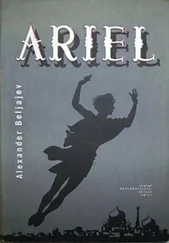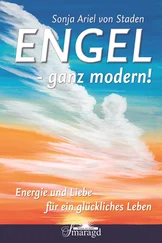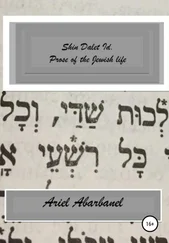Ariel Toaff - Blood Passover
Здесь есть возможность читать онлайн «Ariel Toaff - Blood Passover» весь текст электронной книги совершенно бесплатно (целиком полную версию без сокращений). В некоторых случаях можно слушать аудио, скачать через торрент в формате fb2 и присутствует краткое содержание. Жанр: Религиоведение, на английском языке. Описание произведения, (предисловие) а так же отзывы посетителей доступны на портале библиотеки ЛибКат.
- Название:Blood Passover
- Автор:
- Жанр:
- Год:неизвестен
- ISBN:нет данных
- Рейтинг книги:3 / 5. Голосов: 1
-
Избранное:Добавить в избранное
- Отзывы:
-
Ваша оценка:
- 60
- 1
- 2
- 3
- 4
- 5
Blood Passover: краткое содержание, описание и аннотация
Предлагаем к чтению аннотацию, описание, краткое содержание или предисловие (зависит от того, что написал сам автор книги «Blood Passover»). Если вы не нашли необходимую информацию о книге — напишите в комментариях, мы постараемся отыскать её.
Blood Passover — читать онлайн бесплатно полную книгу (весь текст) целиком
Ниже представлен текст книги, разбитый по страницам. Система сохранения места последней прочитанной страницы, позволяет с удобством читать онлайн бесплатно книгу «Blood Passover», без необходимости каждый раз заново искать на чём Вы остановились. Поставьте закладку, и сможете в любой момент перейти на страницу, на которой закончили чтение.
Интервал:
Закладка:
383
Cfr. R. Segre, The Jews in Piedmont , Jerusalem, 1986, vol. I, p. 286.
384
Cfr. Vauchez, La santità nel Medioevo , cit., pp. 99-100. In this regard, see, most recently, K.R.Stow's stimulating study, Jewish Dogs. An Image and Its Interpreters , Stanford (Calif.), 2006.
385
Cfr. F.S. Hattler, Katholischer Kindergarten oder Legende fur Kinder , Freiburg, 1806. See also Strack's argument, The Jew and Human Sacrifice , cit., pp. 184-185; F. Pauly, Zur Vita des Werner von Oberwesel. Legende und Wirklichtkeit , in "Archiv" für Mittelrheinische Kirchengeschichte", XVI (1964), pp. 94-109; Roth, Medieval Jewish Civilization , cit., p. 569.
386
Cfr. H. de Grèzes, Saint Vernier (Verny, Werner, Garnier) patron des vignerons en Auvergne, en Bourgogne et en Franche-Comptè , Clermont-Ferrand, 1889; A. Vauchez, Antisemitism e canonizzazione populare: San Werner o Vernier (1287), bambino martire e patrono dei vignaioli , in S. Boesch Gajano and L. Sebastiani, Culto dei santi, istituzioni e classi sociali in età preindustriale , L'Aquila-Roma, 1984, pp. 489-508.
387
Berner-Chronik, by G. Studer, Bern, 1871, p. 29. For the more older sources relating to this ritual murder, cfr. Strack, The Jew and Human Sacrifice, cit., pp. 186-188.
388
Cfr. Johann Rudolf von Waldkirch, Gründliche Einleitung zu der Eydgenössischen Bunds- und Staats-Historie , Basel, Thurneysen, 1721, vol. I, p. 135; J. Lauffer, Beschreibung helvetischer Geschichte , Zurich, Conrad Orell, 1706, vol. III. P. 108.
389
Cfr. "Monumenta Germaniae Historica. Scriptores", XXV, Hannover, 1896, p. 717; XLII, Hannover, 1921, p. 29.
390
Cfr. G.L. Langmuir, Thomas of Monmouth. Detector of Ritual Murder , in "Speculum", LIX (1984), p. 824.
391
Cfr. Th. Reinach, Textes d'auteurs grecs et romains relatifs au Judaisme , Paris, 1895, p. 121, no. 60.
392
Josephus, Contra Apion , II, 7-1: "et hoc illos facere singulis annis quodam tempore constituito. Et comprehendere quidem Graecum peregrinum, eumque annali tempore saginare et deductum ad quamdam silvam occidere quidem eum hominem, eiusque corpus sacrificare secundum suas solemnitates, et gustare ex eius visceribus, et iusiurandum facere in immolatione Graeci, ut inimicitas contra Graecos haberent, et tunc in quandam foveam reliqua hominis pereuntis abjicere", Cfr. Rheinach, Textes d'auteurs grecs et romains , cit. pp. 131-132, no. 63.
393
For an examination of the story of Damocritus and Apione on the ritual homicides committed by the Jews in the Temple of Jerusalem, see, among others, J. Parkes, The Conflict of the Church and the Synagogue , 1934, p. 16; D. Flusser, The Blood Libel against the Jews According to the Intellectual Perspectives of the Hellenistic Age , in Studies on Hellenistic Judaism in Memory of J. Levy, Jerusalem, 1949, pp. 104-124 (in Hebrew); Id., Moza 'alilot ha-dam ("The Origins of the Blood Accusation") in "Manhanaim", CX (1967), pp. 18-21; J.N. Sevenster, The Roots of Pagan Anti-semitism in the Ancient World , Leyden, 1975, pp. 140-142.
394
Cfr. Reinach, Textes d'auteurs grecs et romains relatifs au Judaisme , Paris, cit., pp. 196-197, no. 112.
395
Thus, the final passage of this haraita is translated by rabbi Dovid Kamenetsky, in the recent edition of the Babylonian Talmud, with a version in English ( Talmud Bavli, Schottenstein Edition, Tractae Ketubos, III , New York, 2000, c. 102b and no. 32): "for it once occurred that a boy was entrusted to those fit to inherit him, and they butchered (or: slew) him on Pesach eve".
396
"In the Latin translation of extracts from the Talmud contained in Latin manuscript 16558 B.N., which is the principal source of knowledge of rabbinical literature in the Christian world in the 13th century, the Ketubot treatise is not explicitly mentioned there [...]. It does not contain the passage which interests you ( Ketubot 102b ). I have never found it used in polemics; nevertheless, the link made between Pessach might very well have encouraged belief in 'ritual murder'; but the authors of the anti-Jewish accounts on this subject obviously know nothing about Jewish literature. [...]. Among the number of accusations made of ritual murder, I do not recall ever having found an argument based upon this Talmudic passage" [written communication dated 2 August 2001 from Professor Gilbert Dehan, to whom I wish to express my deepest thanks).
397
A. Steinzaltz notes, in this regard, that "in some later editions (of the Talmud), the Rosh Ha-Shanah (New Year's) version appears instead of Pesach , in the fear that this expression might constitute evidence to be used by those who accuse the Jews of ritual murder". ( Talmud Bavli, Ketubot , Jerusalem, 1988, vol. II, p. 457). And nevertheless, the first writer to use the text of Ketubot in this sense seems to be the famous Augusto Rohling, University professor and one of the more caustic Austrian anti-Semitic polemicists, author of Der Talmudjude (Munster, 1871). The passage of Ketubot 102b was revealed by him and publicized with ill-concealed satisfaction in a brochure entitled Ein Talmud fur rituelle Schächten , which saw the light in 1892. Hermann L. Strack replied to him, arguing passionately but only somewhat convincingly, in the fourth edition (London, 1892), of his classic essay on Jews and human ritual sacrifice ( The Jew and Human Sacrifice. Human Blood and Jewish Ritual , pp. 155-168).
398
Talmud Bavli , Vilna, Menachem (Mendele) Man e Simcha Zimel, 1835. It should be noted that this edition preceded by more than half a century the "revelations" of Rohling, in a act of surprising self-censorship. It is not impossible that the editors of the Vilna Talmud intended to respond to doubt and embarrassment within the Jewish world on the interpretation of this text in the original version, rather than reply to the external attacks which were still long yet to come.
399
In this regard, see Ch. Verlinden's now famous classic, L'esclavage dans l'Europe medievale , Brugge, 1955, vol. I, pp. 702-716. For a rather over-simplified interpretation of the role of the Jews in the slave trade, see B. Blumenkranz, Juifs et Chrétiens dans le monde occidental (430-1096), Paris 1960, pp. 18-19, 184-211, to which the same Verlinden replied ( A propos de la place des juifs dans l'économie de l'Europe occidentale au IXème siècles. Agobard de Lyon et l'historiographie arabe, in Storia e storiograph. Miscellanea de studi in onore di E. Dupre - Theseider, Rome, 1974, pp. 21-37).
400
Cfr. Verlinden, A propos de la place des juifs , cit., pp. 32-35.
401
"Et cum precedens scedula dictata fuisset, supervenit quidam homo fugiens ab Hispanis de Cordoba, qui se dicebat furatum fuisse a quoda Judeo Lugduno ante annos IIti IIIor, parvum adhuc puerum, et et venditum. Fugisse autem anno presenti cum alio, qi similiter furatus fuerat ab alio Judeo ante annos sex. Cumque huis, qui Lugdunesis fuerat, notos quereremus et invenirem dictum est a quibusdam et alios ab eodem Judeos furatos, alios vero eptos ac venditos; ab alio quoque Judeo anno presenti alium puerum furatum et venditum; qua hora inventum est plures Christianos a Christianis vendi et comparari a Judeis, perpatrarique ab eis multa infanda que turpia sunt ad scribendum" (Epistolae Karolini aevi, in "Monumenta Germaniae Historica", III, Hannover, 1846, p. 185). For an analysis of this text, see, in particular, B. Blumenkrantz, Les auteurs chrétiens latins au Moyen Age sur les Juifs et le Judaisme , Paris, 1963, pp. 152-168; Id., Juifs et Chrétiens dans le monde occidentale , cit., pp. 191-195; Verlinden, A propos de la place des juifs , cit., pp. 21-25.
Читать дальшеИнтервал:
Закладка:
Похожие книги на «Blood Passover»
Представляем Вашему вниманию похожие книги на «Blood Passover» списком для выбора. Мы отобрали схожую по названию и смыслу литературу в надежде предоставить читателям больше вариантов отыскать новые, интересные, ещё непрочитанные произведения.
Обсуждение, отзывы о книге «Blood Passover» и просто собственные мнения читателей. Оставьте ваши комментарии, напишите, что Вы думаете о произведении, его смысле или главных героях. Укажите что конкретно понравилось, а что нет, и почему Вы так считаете.












